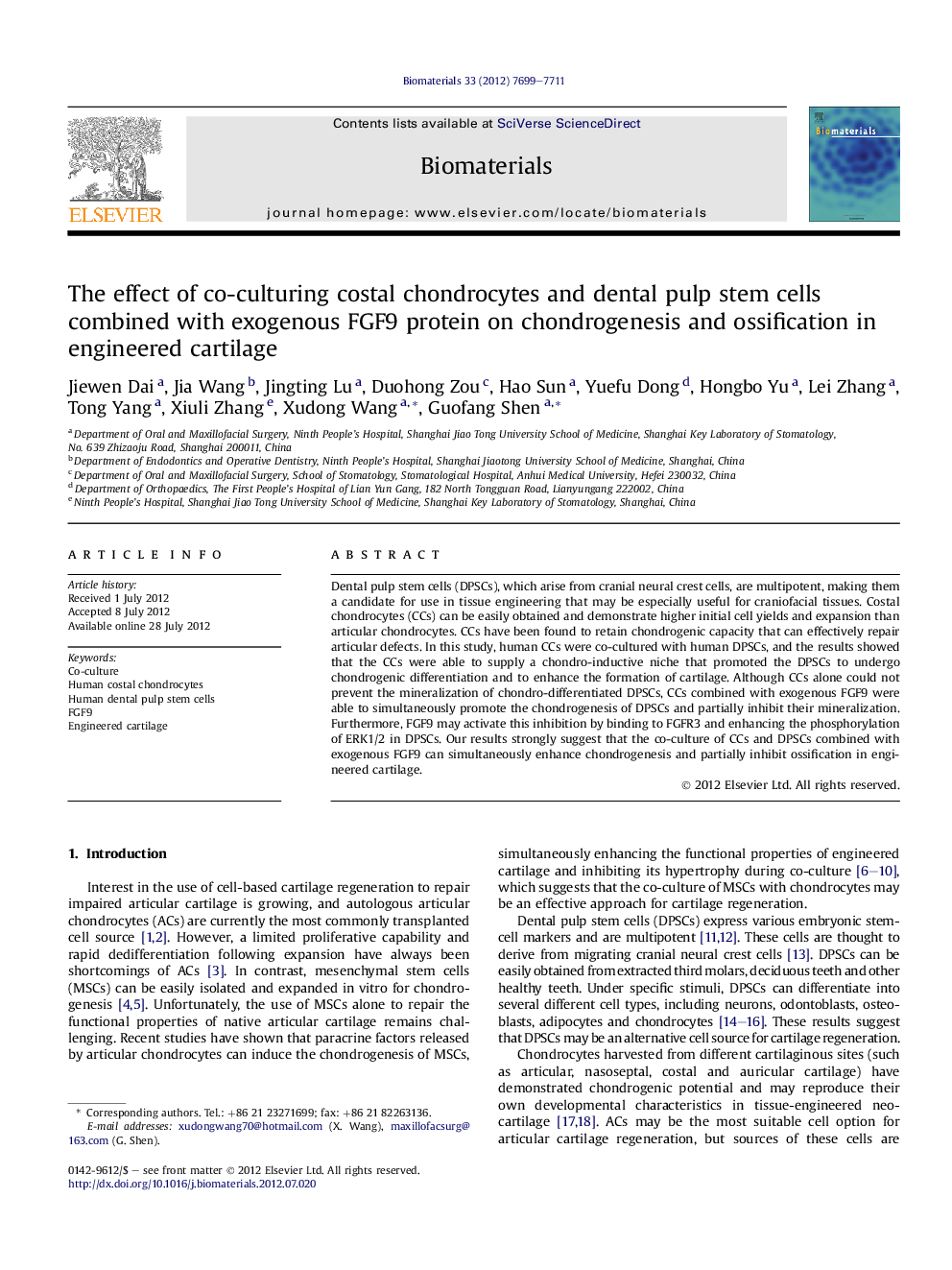| کد مقاله | کد نشریه | سال انتشار | مقاله انگلیسی | نسخه تمام متن |
|---|---|---|---|---|
| 6487 | 492 | 2012 | 13 صفحه PDF | دانلود رایگان |

Dental pulp stem cells (DPSCs), which arise from cranial neural crest cells, are multipotent, making them a candidate for use in tissue engineering that may be especially useful for craniofacial tissues. Costal chondrocytes (CCs) can be easily obtained and demonstrate higher initial cell yields and expansion than articular chondrocytes. CCs have been found to retain chondrogenic capacity that can effectively repair articular defects. In this study, human CCs were co-cultured with human DPSCs, and the results showed that the CCs were able to supply a chondro-inductive niche that promoted the DPSCs to undergo chondrogenic differentiation and to enhance the formation of cartilage. Although CCs alone could not prevent the mineralization of chondro-differentiated DPSCs, CCs combined with exogenous FGF9 were able to simultaneously promote the chondrogenesis of DPSCs and partially inhibit their mineralization. Furthermore, FGF9 may activate this inhibition by binding to FGFR3 and enhancing the phosphorylation of ERK1/2 in DPSCs. Our results strongly suggest that the co-culture of CCs and DPSCs combined with exogenous FGF9 can simultaneously enhance chondrogenesis and partially inhibit ossification in engineered cartilage.
Journal: Biomaterials - Volume 33, Issue 31, November 2012, Pages 7699–7711